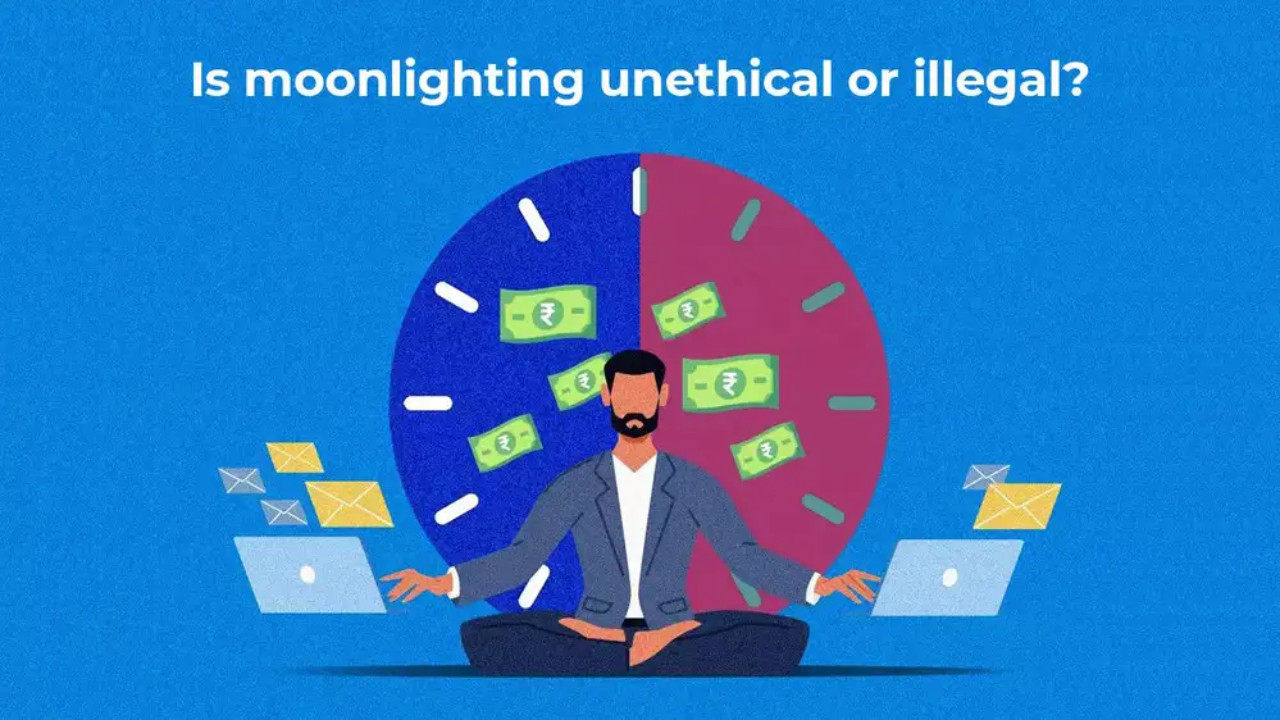The IT industry is seeing a significant increase in moonlighting-related background checks due to low salary increases and job market uncertainty. Verification firms are flagging more cases of overlapping employment, particularly in the IT services sector, as remote work makes it easier for professionals to take on additional roles.
Is Moonlighting Really on the Rise, or is It Just Getting Harder to Hide?
The corporate water cooler (or, these days, the virtual Slack channel) is buzzing. The topic? That age-old dance between loyalty and ambition, now amplified by the gig economy: moonlighting. Are employees truly taking on second jobs in droves, or are companies simply getting better at sniffing them out? Recent rumblings suggest it might be a bit of both.
For a while, whispers of employees juggling multiple roles were met with a shrug. The pandemic blurred lines, and remote work seemed to offer the perfect cover. Need to attend a “doctor’s appointment” during the morning stand-up? No problem. But the laissez-faire attitude appears to be fading, especially in the IT sector, where companies are now tightening the screws on what they consider a conflict of interest.
What’s driving this increased scrutiny? For one, the competition for talent is fiercer than ever. Companies are investing heavily in their employees, not just financially, but also in training, development, and benefits. They want to see a return on that investment, and that means employees fully engaged and focused on their primary role. A distracted employee, even if highly skilled, could easily become a liability.
And let’s be honest, confidentiality is a big concern. In the fast-paced world of technology, intellectual property is gold. The thought of a developer inadvertently (or intentionally) sharing proprietary information with a competitor is enough to keep CEOs up at night. This fear, justified or not, is prompting IT companies to ramp up their monitoring efforts.

So, how are companies cracking down? It’s a multi-pronged approach. Expect to see increasingly detailed employment contracts that explicitly address moonlighting. Some companies are implementing stricter monitoring of employee activity on company devices. Others are relying on good old-fashioned peer reporting, incentivizing employees to raise concerns about colleagues who seem to be burning the candle at both ends. Background checks, both pre-employment and periodic, are also becoming more common, helping to uncover undisclosed affiliations.
But here’s the rub: is all this vigilance actually effective? And more importantly, is it the right approach? Many argue that overly restrictive policies can breed resentment and stifle innovation. After all, some moonlighting activities can actually enhance an employee’s skills and bring fresh perspectives back to their primary role. Imagine a data scientist who spends evenings working on open-source AI projects. Their newfound knowledge could directly benefit their employer.
The core issue often boils down to transparency. Some companies are embracing a more open dialogue, encouraging employees to disclose any outside commitments and discussing potential conflicts of interest proactively. This approach requires trust and a willingness to consider each situation on its merits. Rather than an outright ban, some are exploring alternative solutions, such as flexible work arrangements or internal “gig” opportunities that allow employees to explore different skills within the company.
It’s also worth questioning whether the perceived rise in moonlighting reflects a deeper issue: employee dissatisfaction. Are people seeking second jobs simply because they need the extra income, or are they also looking for fulfillment, challenges, or recognition that they’re not finding in their primary role? A company that focuses on employee well-being, provides opportunities for growth, and fosters a sense of purpose may find that the temptation to moonlight diminishes naturally.
For instance, consider the value of promoting employee learning. We have an internal learning and development portal that could help scratch that itch for new skills and knowledge.
Ultimately, the future of moonlighting will depend on a complex interplay of factors: economic pressures, technological advancements, and evolving attitudes towards work-life balance. But one thing is clear: companies can’t simply rely on stricter rules and increased surveillance. They need to address the underlying reasons why employees are tempted to moonlight in the first place and create a workplace that fosters engagement, loyalty, and a genuine sense of purpose. The discussion around moonlighting is sure to evolve, but the underlying human needs for security, purpose, and growth will remain constant.







